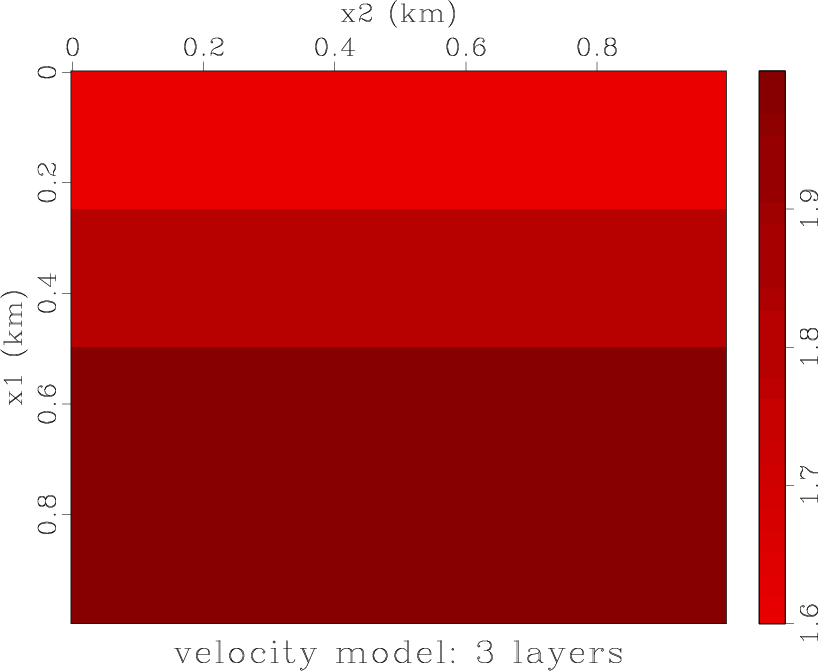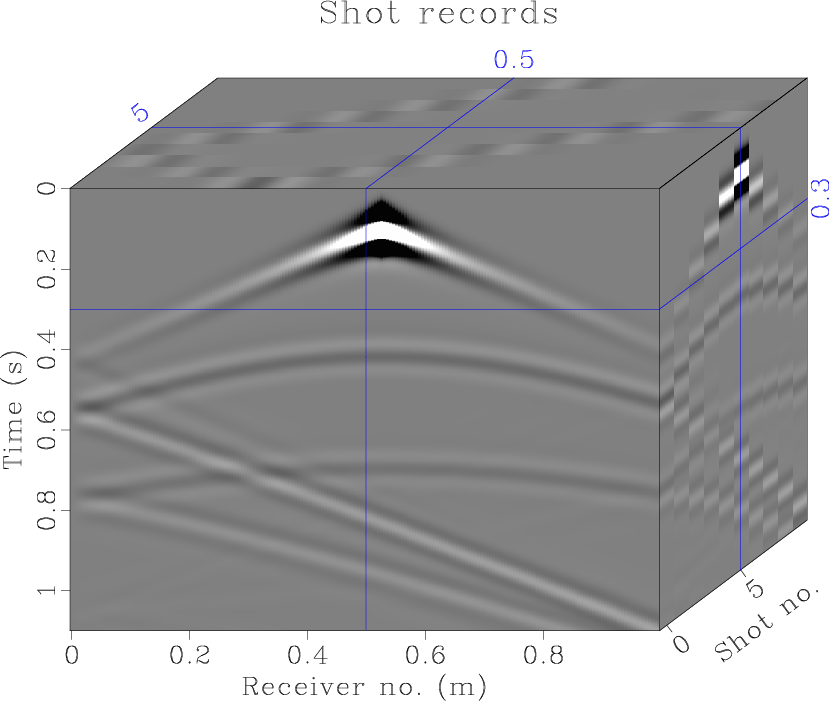|
|
|
|
A numerical tour of wave propagation |
To simulate the wave propagation in the infinite space, the absorbing boundary condition (ABC), namely the proximal approximation (PA) boundary condition, was proposed in Clayton and Engquist (1977) and Engquist and Majda (1977). The basic idea is to use the wave equation with opposite direction at the boundary. Take the bottom boundary as an example. Here, allowing for the incident wave is down-going, we use the up-going wave equation at the bottom boundary. Using a model including 3 layers (Figure 6), Figure 7 displays 10 shots data volume obtained the Clayton-Enquist boundary condition.

|
|---|
|
vel
Figure 6. Velocity model: 3 layers |
|
|

|
|---|
|
shots
Figure 7. 10 shots data volume obtained using the Clayton-Enquist boundary condition. |
|
|
|
|
|
|
A numerical tour of wave propagation |